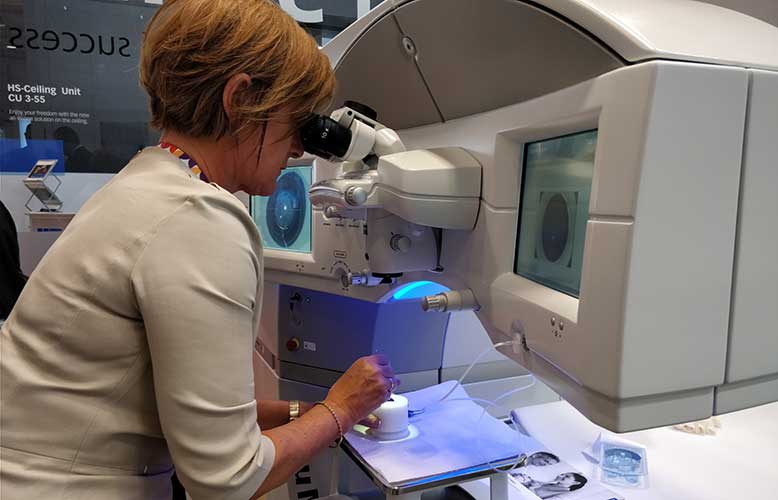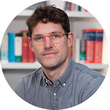- OT
- Life in practice
- Career development
- Another excellent ESCRS
Another excellent ESCRS
From operating on a pig’s eye in the SMILE wet lab to learning lessons on how to perform cataract surgery in high risk eyes, Sundeep Vaswani found ESCRS 2017 a must-return event

14 November 2017
This year, Lisbon played host to the 35th Congress of the European Society of Cataract and Refractive Surgeons (ESCRS). Thousands of delegates and exhibitors congregated from all corners of the world to attend what is deemed to be the conference at the forefront of cataract and refractive surgery.
The conference consisted of more than a dozen symposia, hundreds of free papers, over a thousand electronic posters, numerous interactive courses and video presentations. To see everything on offer is truly an insurmountable feat; it is always worthwhile reviewing the programme thoroughly to see what is relevant to one’s own interests.
The official welcome for the congress occurs typically on the second day, so day one starts on a lighter note. My colleague Dr Clare O'Donnell and I used this opportunity to make our way to the exhibitors’ stalls to experience surgical wet labs – something we very rarely get a chance to do. At the ZEISS stall, small incision lenticule extraction (SMILE) wet labs were available to anyone who wished to experience performing the procedure – on a pig’s eye of course. As optometrists, we greatly welcomed this rare opportunity to perform the latest generation in laser vision correction and I was pleasantly surprised that I managed to complete the procedure without any complications. Still enthused from the experience of the SMILE wet lab, I visited the Alcon stand, where I experienced a cataract wetlab. This was far more difficult and did not go quite as smoothly as the laser procedure. Overall, the wetlabs were a fantastic experience and one I would highly recommend to anyone if given the opportunity.
"The wetlabs were a fantastic experience and one I would highly recommend to anyone if given the opportunity"
A host of tech
The next day began with the official welcome from the ESCRS president; Professor David Spalton, followed by the keynote lecture and recipient of the Binkhorst Medal, Professor Boris Malyugin. The renowned cataract surgeon discussed the lessons he has learned over the years performing cataract surgery in high risk eyes. Professor Malyugin is also credited for developing an instrument known as the Malyugin ring, which is a device used as a pupil expander for small pupil cataract surgery. This invention has since inspired others to create variations of the same instrument.
The lunchtime symposiums over the first two days showcased a host of technologies and intraocular lenses that were launching at the event, or are on the horizon. These included new monofocals, multifocals and extended depth of focus intraocular lenses. OCT topographers were shown by various companies demonstrating the tremendous resolution to which we can now map the corneal layers. Schwind also unveiled their brand-new femtosecond laser prototype, which will now be the second laser that can perform corneal lenticule extraction surgery.
SMILE was a major focus at the congress this year and various lectures were given on high myopic treatments with SMILE, enhancements after the procedure and long-term outcomes. All the lectures were encouraging and well received. SMILE has now reached one million procedures worldwide and it seems this latest generation of laser vision correction may perhaps become the gold standard in the future. SMILE is only available at present for the treatment of myopia and astigmatism; however, European trials are currently being carried out for hyperopic treatments. No doubt there will be an update on this at Congress next year.

Eclectic mix
Ocular surface health is always a focal point in refractive surgery both pre and post-operatively, and updates on this subject are greatly welcomed. Dry eye and blepharitis were covered well this year, with discussions on the latest treatments and drug delivery systems. One such example is the use of ciclosporin drops, which only received NICE approval two years ago. It is a compound that is designed to suppress the immune response, which triggers inflammation and can be used in severe dry eye cases that have not responded to artificial tear substitutes. One study discussed the use of ciclosporin in a group of patients suffering with dry eyes for over three years and showed improvements in corneal surface staining and dry eye questionnaires after only one week of use with the drug.
Although the meeting overall has a large focus on refractive surgery, there is still an eclectic mix of lectures and workshops. For those interested in glaucoma, age-related macular degeneration, corneal or retinal surgery, there are enough lectures, posters and workshops to keep everyone busy. As conferences go, you would also be hard pressed to find one as well organised, despite its enormous scale.
As an optometrist, I feel it is an excellent opportunity to interact with numerous international healthcare professionals, as well staying up to date with the latest innovations and technologies. I look forward to next year in Vienna.
About the author
Sundeep Vaswani is an optometrist and clinical research associate at Optegra.
Advertisement


Comments (0)
You must be logged in to join the discussion. Log in